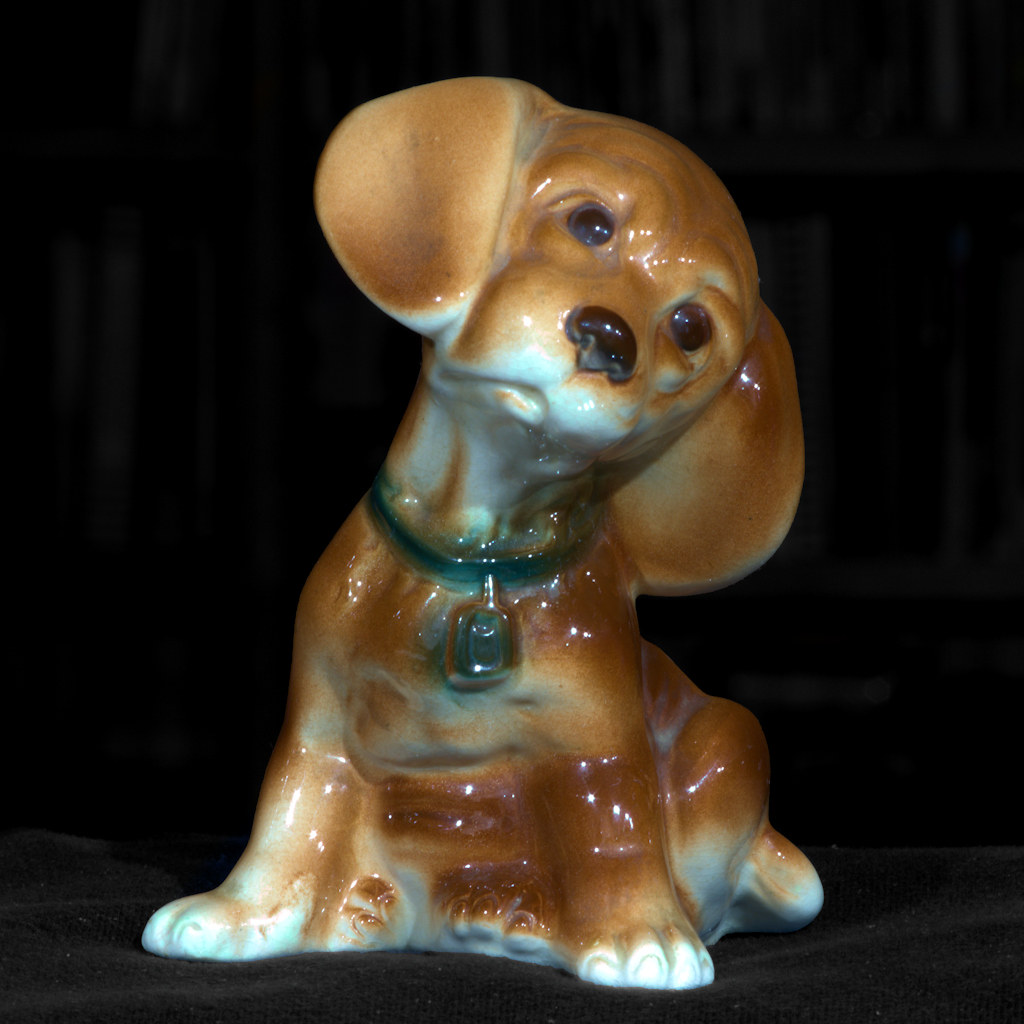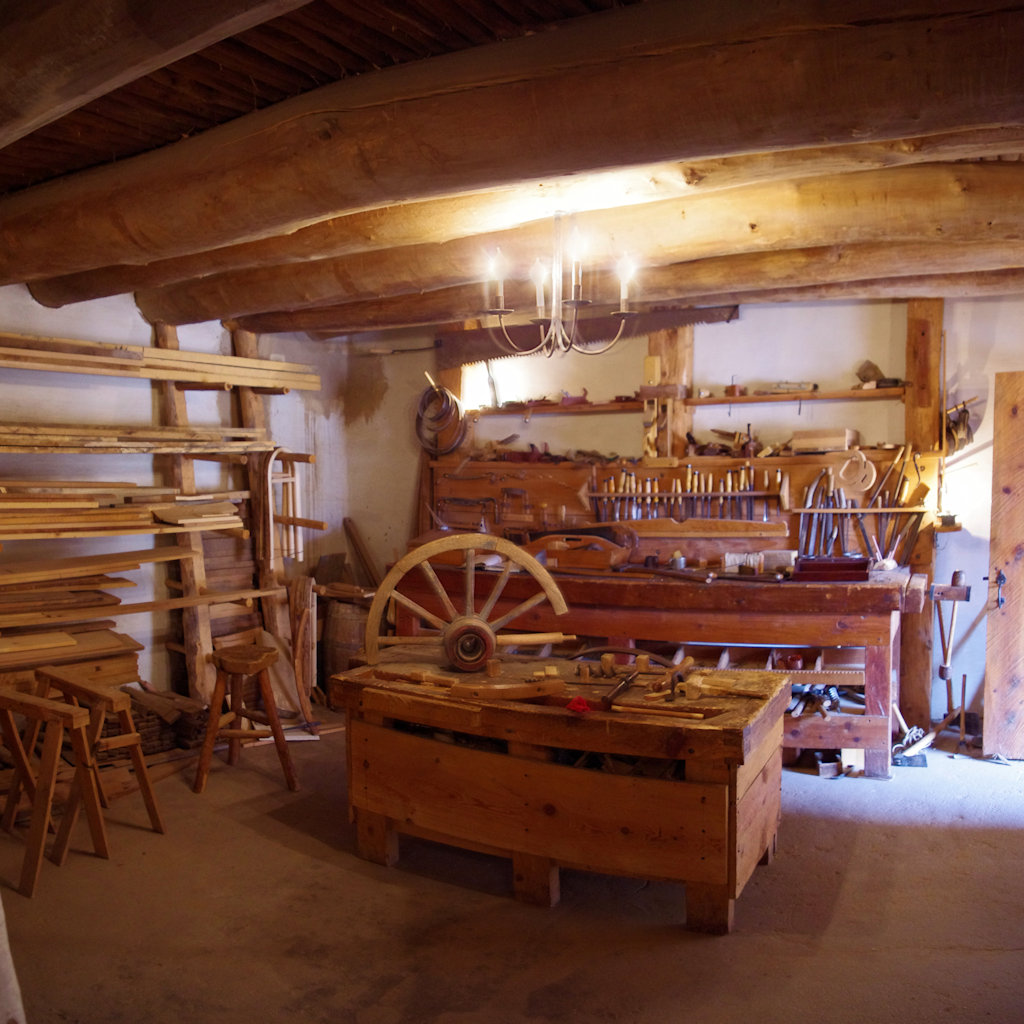Photography Now & Then #49
This was a favorite “whatnot” for me when I was a kid living with my grandparents. After my grandmother died, it was passed on to me. I can personally attest that it is over 60 years old.

Today’s photo[1]: Whatnot ceramic dog; photo: February 18, 2018 (Pentax K-3 II)
whatnot
Whatnot is another word for odds and ends. Whatnot also means etcetera, so it often comes at the end of a list. On top of a dresser, there might be souvenirs, snow globes, a collection of porcelain pigs, and whatnot.
Whatnot has always referred to knickknacks, but a whatnot used to be the name of the shelves to put those knickknacks on. Whatnot can also be the little doodads themselves. You can use this word to indicate additional things of any kind that you don’t feel like naming. At the zoo, you might see lions, zebras, giraffes, and whatnot. In those cases, whatnot means a bunch of other stuff that’s like the stuff mentioned.
Definitions of whatnot
n. miscellaneous curios
Synonyms:
bric-a-brac, knickknack, knickknackery, nicknack
Type of:
curio, curiosity, oddity, oddment, peculiarity, raritysomething unusual — perhaps worthy of collecting
______________________________________
I had done some research on Bent’s Old Fort several years back and, during our 2011 trip, it was on our not-firm-at-all list of things to see and do.
Bent’s Old Fort is a reconstruction of an 1840s Santa Fe Trail adobe fur trading post. In the late 1820’s or early 1830’s, William Bent, who had apparently been trading independently, erected a large adobe fort on the north bank of the Arkansas River, 12 miles west of the mouth of the Purgatoire. At first named Fort William, it was also known as Bent’s Fort and finally as Bent’s Old Fort after it was partially destroyed and a new fort was built elsewhere. (from a much more extensive post written in 2011)
When we visited the fort, certain parts of it seemed so very familiar. At some point later on, we realized, as Karen notes in her comment, below, “Bent’s Old Fort was used for a scene or two in the old TV mini-series Centennial.” That series was one we really enjoyed and re-watched several times on VHS. We now have it on DVD and it’s rather surreal to see the scenes where Richard Chamberlain’s character is the owner of the fortified trading post that we had visited just a few years ago.

Photo Favorite[2]: Carpenter shop at Bent’s Old Fort, La Junta, Colorado, September 7, 2011 (composite of 2 Pentax K-r images using AutoStitch)
Carpenter Shop[3]
The repair of wagons was critical to the success of Bent’s Fort. During some periods of the fort’s history, it resembled a wrecking yard, with broken axles, fractured hubs, splintered side boards, mounds of white canvas and piles of abandoned tongues and spreaders. The fort’s craftsmen were especially anxious to salvage the iron parts, which could be reworked into other useful pieces. One might find hooves to make glue, and rawhide- the duct tape of the 1840s. Hardwoods from Missouri were cut and shaved into wagon parts. Making do with what they had, they kept the wagons rolling.
- Today’s Photo is a photo that is almost always taken the day of the blog post. In some instances, posts may be backdated if internet access is not available on the day of the photo or other reasons prevent posting Photograph Now and Then.
- Photo Favorite is a randomly selected older photograph from a batch of photos specifically “curated” for Photograph Now and Then.
- Virtual Tour of Fort – Bent’s Old Fort National Historic Site, National Park Service
Notes:
- Reference links were accessed on the date the blog post was published, unless otherwise stated.
- The title convention for Photography Now & Then blog posts evolved early on from one word related to each photo separated by “&” to usually being the first word in the caption description for each photo.


Comments on this entry are closed.
just a point of added interest – Bent’s Old Fort was used for a scene or two in the old mini-series Centennial